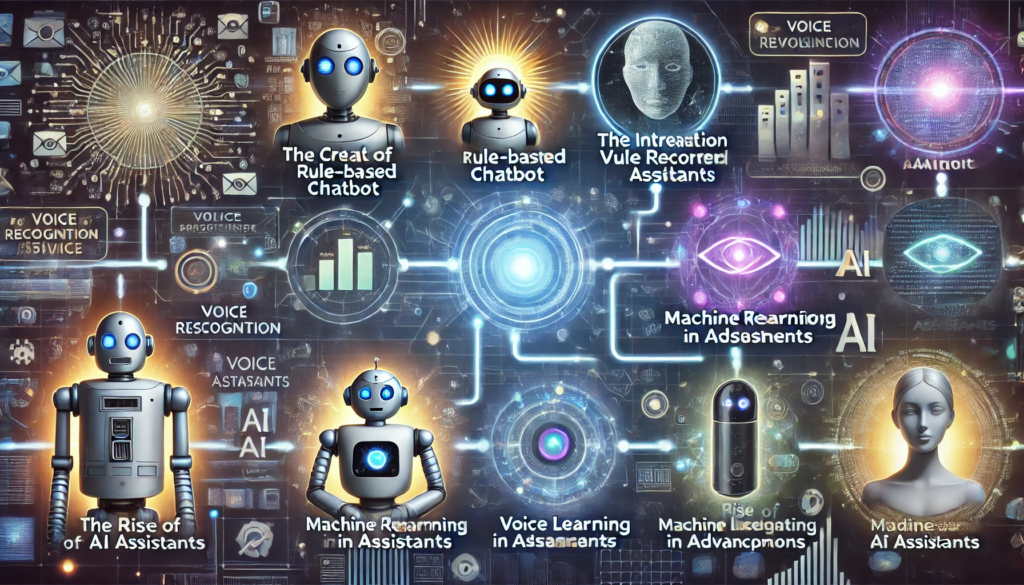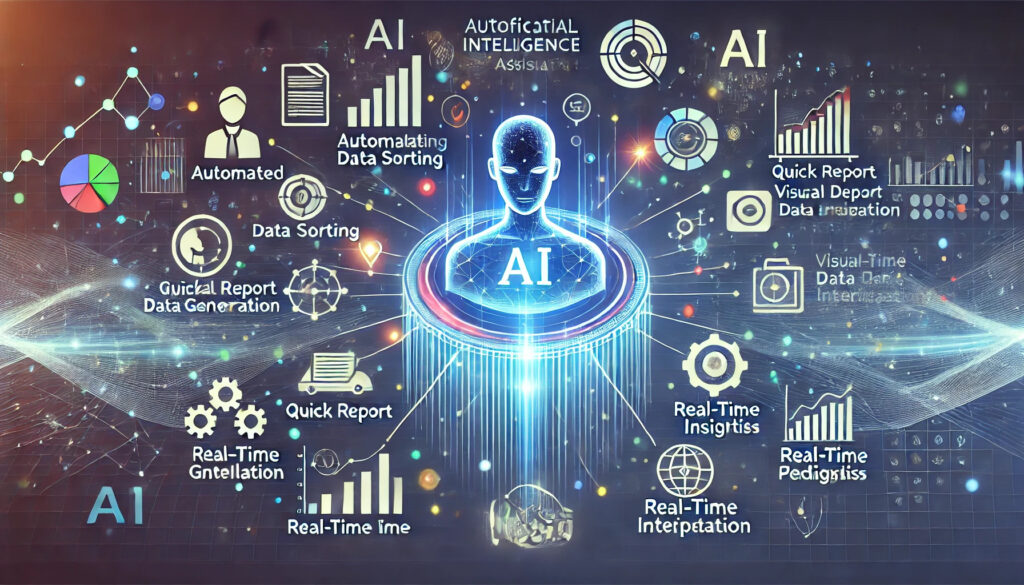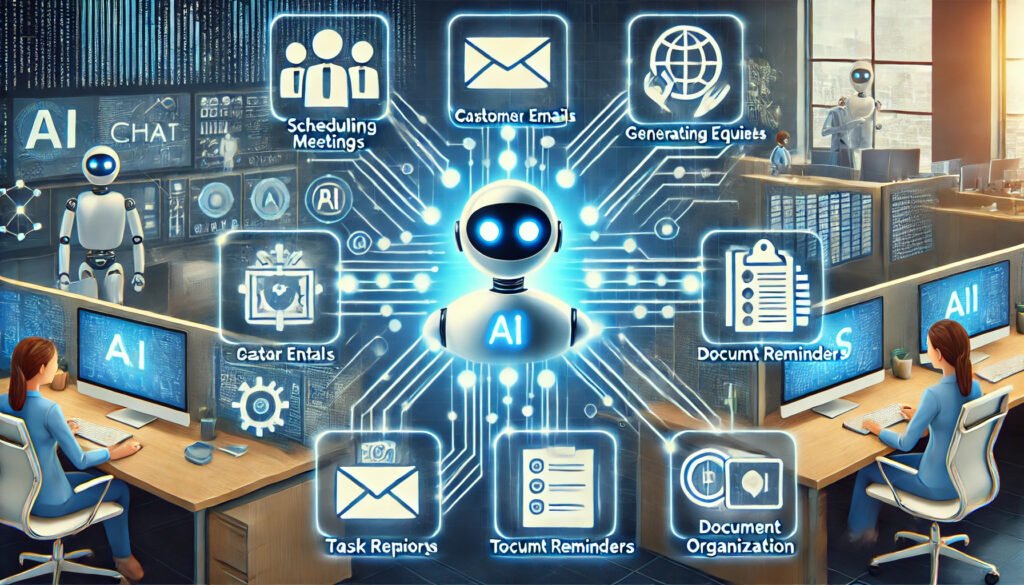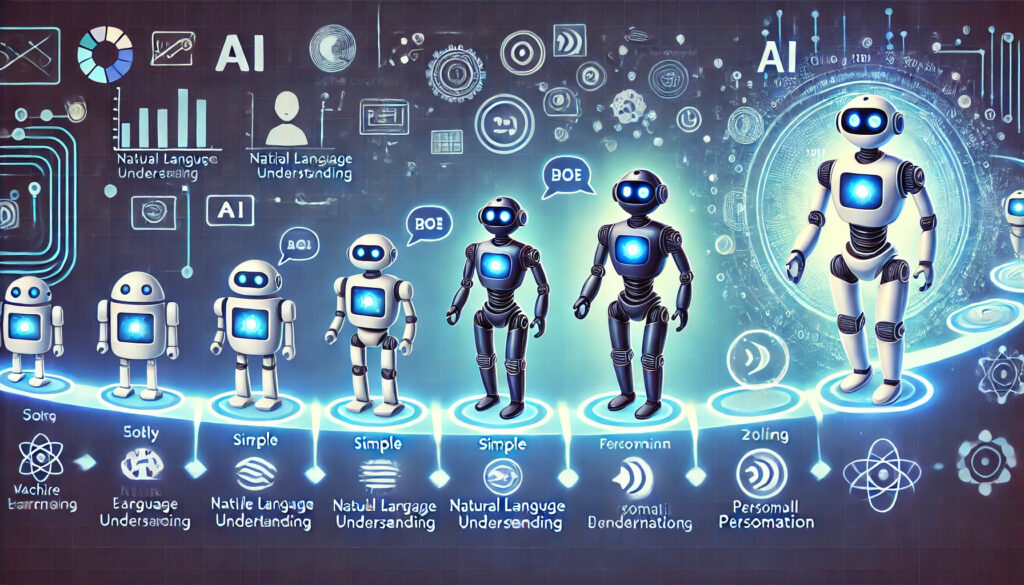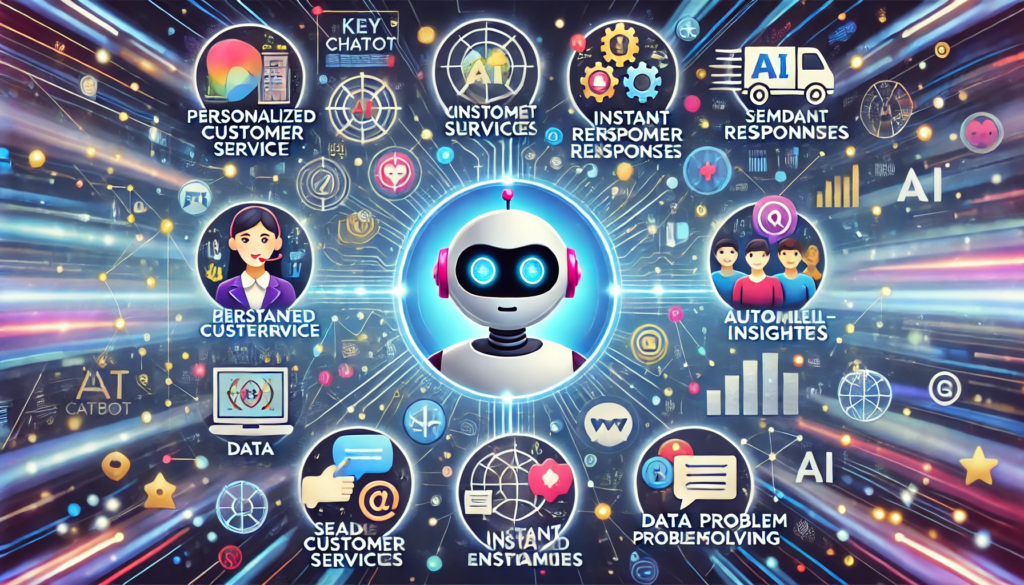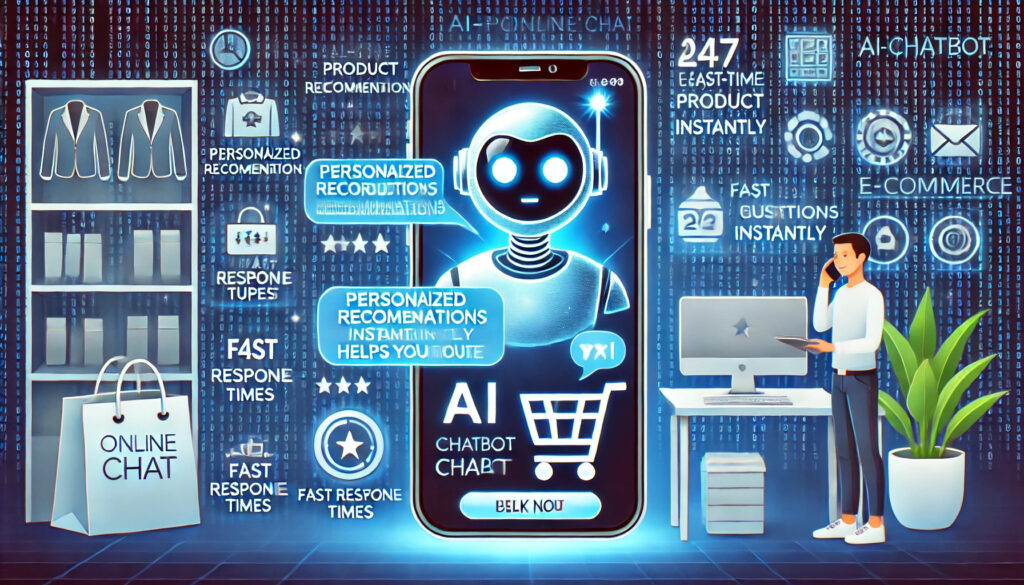The Need for Cost Efficiency with AI Bots
As businesses grow and expand into global markets, managing operational costs becomes a top priority. Companies face rising labor expenses, overhead costs, and the challenge of maintaining service quality while cutting expenditures. For many organizations, traditional methods of scaling customer service, data management, and administrative processes result in ballooning costs. Hiring more employees to meet the growing demand for support, data processing, and customer engagement becomes unsustainable in the long run. This is where AI bots come into play.
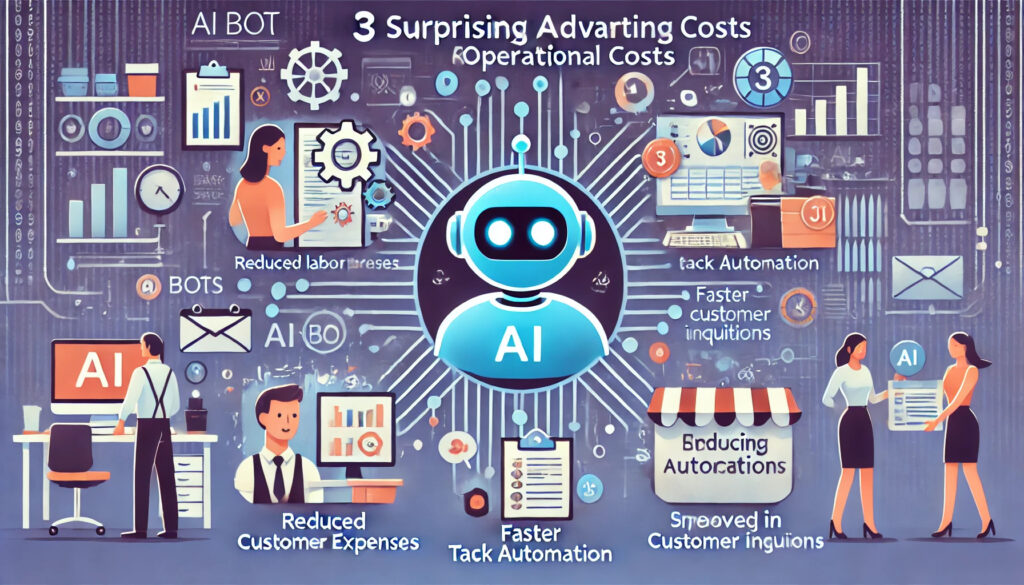
The integration of AI bots into business operations has emerged as a revolutionary way to tackle these challenges. These systems automate repetitive and routine tasks, reduce the need for large teams of human workers, and ensure that business processes are both scalable and efficient. With AI bots, businesses can handle customer interactions, internal workflows, and data processing tasks at a fraction of the cost. By eliminating the need for human intervention in many cases, AI bots help organizations significantly reduce overhead and labor costs.
Furthermore, AI bots offer the added advantage of working around the clock without fatigue, increasing productivity while minimizing errors. Unlike human workers who require rest, training, and breaks, AI bots can handle an infinite number of tasks in real-time, ensuring that operations continue smoothly even outside of traditional business hours. For these reasons, companies like Google, IBM, and Amazon have rapidly adopted AI bots across various sectors, leveraging them to streamline processes and enhance operational efficiency.
1. Streamlining Repetitive Tasks
AI bots handling routine administrative work
One of the primary functions of AI bots is to take over routine and repetitive administrative tasks that typically consume significant time and resources. Tasks such as scheduling meetings, managing employee data, and processing invoices are crucial to a business’s daily operations but don’t necessarily require human input. By implementing AI bots, businesses can automate these processes, ensuring they are completed more quickly and with fewer errors. This frees up employees to focus on more complex and strategic work, thus improving overall productivity.
In addition to automating mundane tasks, AI bots excel in areas such as document management and filing, automating the sorting, tagging, and categorization of important business documents. For example, Google’s AI bots have been used internally to schedule meetings across departments, notify employees of task deadlines, and even automate the filing of reports. This automation drastically reduces the administrative burden on staff, cutting the time spent on manual processes by up to 80%, according to studies conducted by Google.
IBM Watson, another leader in AI technology, has similarly been employed to manage routine administrative functions. Watson’s capabilities extend to automating customer feedback surveys, handling employee onboarding processes, and managing financial transactions. By automating these tasks, companies have significantly reduced the workload on administrative teams, allowing them to focus on more value-added tasks that contribute directly to the company’s growth and success.
Case studies of AI bots in customer support
Customer support is one of the most costly areas of business operations, particularly for companies with large customer bases that require round-the-clock assistance. In this arena, AI bots have made a significant impact by automating responses to common customer inquiries and providing real-time solutions without the need for human agents. This automation not only reduces costs but also enhances the overall customer experience by providing faster and more accurate responses.
A prime example is Amazon’s Alexa, which handles a wide variety of customer support tasks, from answering simple product-related questions to assisting customers with order tracking. By integrating AI bots into their support systems, Amazon has managed to reduce their reliance on human customer service representatives, cutting operational costs while maintaining a high level of service. Similarly, Google Assistant and IBM Watson have been deployed in various industries to handle customer queries, reducing the need for large, costly customer service teams.
These case studies illustrate the effectiveness of AI bots in automating customer interactions and highlight their cost-saving potential. Businesses that have implemented AI bots in customer support have reported up to a 70% reduction in human labor costs. Additionally, with AI bots available 24/7, customers can access support whenever they need it, resulting in higher satisfaction rates and better brand loyalty.
AI bots managing data entry efficiently
Data entry is another area where AI bots excel in reducing operational costs. Traditionally, data entry tasks require human workers to manually input data from forms, documents, and other sources into business systems. This process is not only time-consuming but also prone to human error, leading to mistakes that can have costly repercussions. AI bots, on the other hand, can automate data entry tasks with a high degree of accuracy, ensuring that data is entered correctly and consistently.
For example, Google Dialogflow has been used by businesses to automate the extraction of relevant data from customer interactions and input it into the company’s database. This allows companies to collect and process customer data in real-time without relying on human workers. By automating this process, businesses not only save on labor costs but also ensure that data is processed faster, leading to quicker decision-making and improved operational efficiency.
Additionally, IBM Watson has been integrated into enterprise systems to manage large volumes of data, handling everything from financial transactions to customer profiles. Watson’s ability to process and categorize data in real-time means that businesses can maintain accurate records without the overhead associated with manual data entry. The result is a streamlined process that reduces the risk of human error and increases the speed at which business operations are conducted.
2. Automating Customer Interactions
History of AI in customer service
The automation of customer service interactions has a long history, dating back to the early days of chatbots such as Eliza, developed in the 1960s. While these early systems were rudimentary, they laid the groundwork for more advanced AI bots that we see today. Over the years, advancements in natural language processing (NLP) and machine learning have made AI bots much more sophisticated, allowing them to understand and respond to customer queries in a human-like manner.
The evolution of AI bots in customer service has been driven by the need for businesses to reduce costs while improving the quality of service. Early iterations of AI chatbots were limited in their ability to understand complex queries, but today’s AI bots are capable of handling a wide range of customer interactions. These advancements are largely due to innovations from companies like Google and IBM, who have been at the forefront of developing AI-driven customer service solutions.
As technology has progressed, AI bots have become essential tools for businesses looking to automate customer interactions. They can now manage everything from basic FAQs to more complex inquiries such as troubleshooting technical issues. This automation allows businesses to provide consistent and high-quality customer service without the need for large teams of human agents, significantly reducing operational costs.
Major organizations using AI bots for customer interaction
Several major organizations have successfully integrated AI bots into their customer service systems to automate interactions and reduce costs. Google has made significant strides in this area with its Google Assistant and Dialogflow, both of which have been widely adopted by businesses to handle customer queries across multiple channels. Google’s AI bots are designed to manage tasks such as answering product-related questions, helping customers navigate websites, and providing real-time support through chat and voice interfaces.
Another prominent example is IBM Watson Assistant, which has been deployed by organizations in industries ranging from healthcare to retail. Watson’s advanced NLP capabilities enable it to understand customer intent and provide personalized responses. By integrating Watson into their customer support systems, businesses have been able to automate a large portion of customer interactions, resulting in significant cost savings.
Amazon, with its Lex chatbot technology, has also implemented AI bots to handle customer service inquiries. Amazon Lex, which powers Alexa, is used by businesses to automate tasks such as order tracking, customer inquiries, and product recommendations. These AI-driven systems help businesses manage a large volume of customer interactions without requiring extensive human involvement, ultimately reducing labor costs and improving efficiency.
Reducing the need for large customer support teams
The introduction of AI bots in customer service has drastically reduced the need for large support teams. In the past, businesses had to maintain large customer service departments to handle incoming calls, emails, and chats. These departments were often costly to operate, especially for companies with a global customer base. However, with the integration of AI bots, businesses can now manage a high volume of customer inquiries without the need for an extensive workforce.
Google Dialogflow and IBM Watson have been particularly effective in reducing the size of customer support teams. By automating up to 70-80% of customer interactions, these AI bots allow human agents to focus on more complex and high-value interactions. This not only reduces labor costs but also improves service quality by ensuring that human agents are only engaged when their expertise is truly needed.
In addition, businesses can now offer 24/7 customer support without the need for round-the-clock staffing. AI bots are available at all times, providing immediate responses to customer queries, even outside of traditional business hours. This level of automation ensures that customers receive timely support, improving their overall experience while reducing the operational costs associated with maintaining large customer service teams.
3. Optimizing Workflow Efficiency
AI bots improving internal processes
Beyond customer interactions, AI bots are increasingly being used to optimize internal business processes, leading to greater efficiency and reduced operational costs. From HR processes like onboarding new employees to managing IT help desks and data processing, AI bots are streamlining workflows and eliminating the bottlenecks that often slow down business operations. By automating routine tasks, businesses can ensure that processes are completed faster and with fewer errors.
For instance, Google has integrated AI bots into its internal operations to manage a variety of administrative tasks. These bots can automatically assign tasks, schedule meetings, and generate reports, reducing the time employees spend on these repetitive tasks. This automation not only saves time but also improves overall workflow efficiency, allowing employees to focus on more strategic and creative tasks that add value to the company.
Similarly, IBM Watson has been used by businesses to automate internal processes such as managing employee schedules, generating financial reports, and even conducting performance evaluations. Watson’s ability to analyze data and generate insights in real-time means that businesses can make informed decisions more quickly. This has led to improved productivity, faster turnaround times, and reduced operational costs across a range of industries.
AI bots in inventory and supply chain management
Inventory management and supply chain logistics are critical areas where businesses can experience significant cost savings through the use of AI bots. Managing inventory levels, forecasting demand, and coordinating supply chain processes are complex tasks that often require significant manpower. However, AI bots can automate many of these tasks, providing real-time updates on inventory levels, predicting demand trends, and optimizing supply chain workflows.
IBM Watson is widely used in supply chain management to automate tasks such as monitoring stock levels, generating purchase orders, and coordinating with suppliers. By automating these processes, businesses can ensure that they have the right products in stock at the right time, reducing the risk of overstocking or stockouts. This level of automation not only improves efficiency but also reduces the costs associated with manual supply chain management.
Additionally, Google has integrated AI bots into its supply chain management systems to streamline operations and reduce costs. Google’s AI bots use predictive analytics to forecast demand, optimize delivery routes, and manage supplier relationships. This has allowed businesses to improve their supply chain efficiency, reduce transportation costs, and ensure that products are delivered to customers on time.
AI in task delegation and automated reporting
Task delegation is often a time-consuming process, especially in large organizations where multiple departments and teams need to collaborate. AI bots can automate this process by assigning tasks based on employee availability, skill sets, and workload. This ensures that tasks are delegated efficiently and that projects are completed on time. Additionally, AI bots can generate automated reports, providing real-time insights into business operations without the need for manual data entry.
For example, IBM Watson has been deployed in organizations to manage task delegation and reporting. Watson can analyze project timelines, assess team workloads, and automatically assign tasks to the most appropriate team members. This automation reduces the time managers spend on task allocation and ensures that work is distributed evenly across teams. Furthermore, Watson can generate detailed reports on project progress, employee performance, and operational efficiency, providing businesses with the insights they need to make informed decisions.
Similarly, Google’s AI bots can be used to automate reporting tasks, generating insights into business performance, customer behavior, and operational efficiency. By automating these tasks, businesses can ensure that they have access to accurate and up-to-date information without the need for manual reporting processes. This not only saves time but also reduces the risk of errors in reporting, leading to more accurate decision-making.
Evaluating the financial benefits of AI-driven workflows
The financial benefits of AI-driven workflows are substantial. By automating routine tasks and optimizing business processes, AI bots enable businesses to reduce operational costs while improving efficiency. Companies that have implemented AI bots report significant cost savings, with some businesses reducing operational costs by up to 50%. These cost savings are achieved through reduced labor costs, improved accuracy, and faster decision-making.
In addition to reducing costs, AI bots also help businesses improve productivity by enabling employees to focus on more strategic tasks. By automating routine processes, businesses can increase the overall efficiency of their operations, leading to higher profitability. Furthermore, the scalability of AI bots ensures that businesses can grow without a proportional increase in operational costs, making AI bots an essential tool for companies looking to scale efficiently.
The financial benefits of AI-driven workflows are not limited to cost savings alone. Businesses that have implemented AI bots have also reported improved customer satisfaction, faster response times, and better decision-making capabilities. These benefits contribute to the overall success of the business, making AI bots a valuable investment for any organization looking to reduce costs and improve efficiency.
Conclusion: AI Bots and Their Role in the Future of Business
As AI bots continue to advance, their role in reducing operational costs and improving efficiency will only become more significant. Businesses that have adopted AI bots are already seeing the benefits in terms of faster service, reduced labor costs, and improved operational efficiency. Companies like Google, IBM, and Amazon are leading the way in integrating AI bots into their operations, and other businesses are following suit to remain competitive in the marketplace.
Looking ahead, AI bots will play an even greater role in automating more complex tasks, such as decision-making, data analysis, and customer engagement. As machine learning and natural language processing continue to improve, AI bots will become even more capable of handling intricate tasks, providing businesses with even greater cost savings and operational efficiencies.
However, businesses must also be mindful of the challenges associated with AI adoption, including data privacy concerns, the need for employee training, and the potential for resistance to change. Despite these challenges, the future of AI bots is bright, and businesses that invest in this technology will be well-positioned to succeed in an increasingly competitive market.

